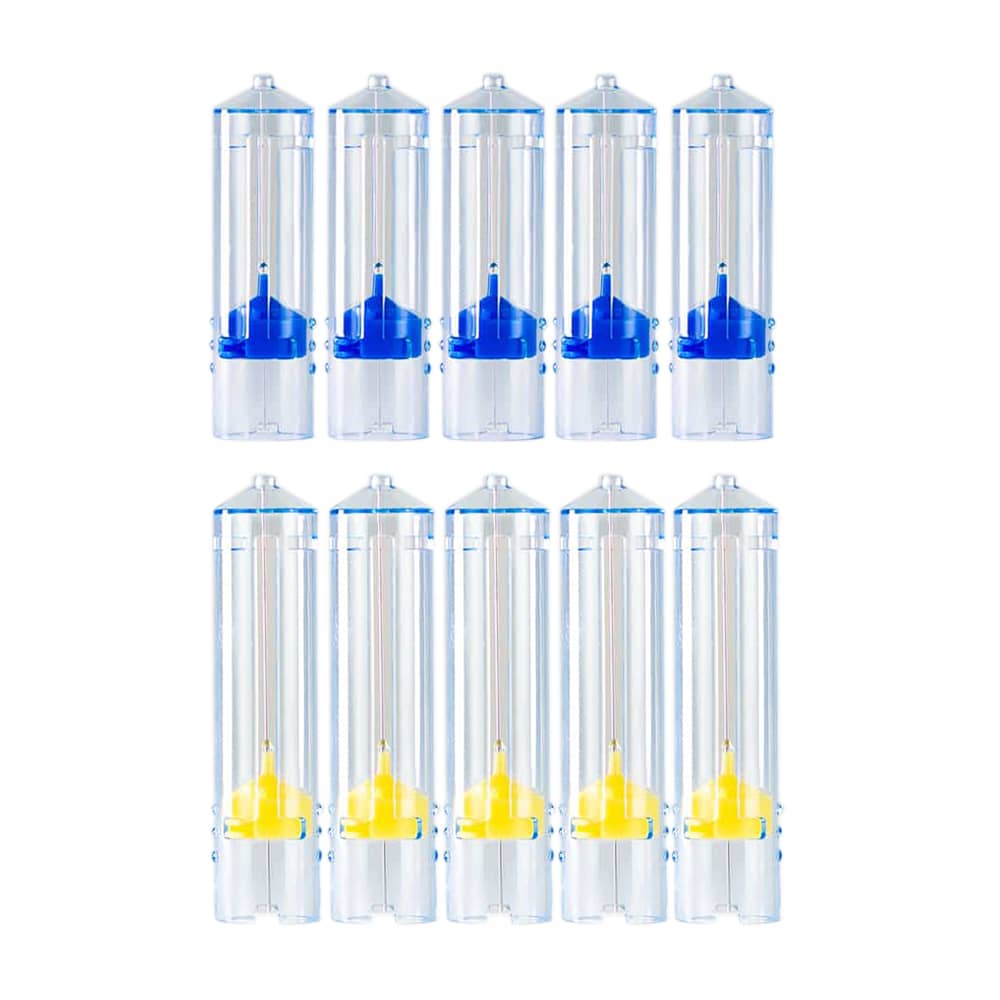The risks involved with providing dental care can be serious, so patient safety should be an important part of every dental practice. Here are some safety-promoting suggestions for clinicians and staff.
Tip 1: Follow OSHA Standards
To avoid exposure to bloodborne pathogens, adhere to standards created by the Occupational Safety & Health Administration (OSHA). These include:
- Providing information and training to staff
- Establishing an exposure control plan
- Using Personal Protection Equipment (PPE) such as gloves, masks, gowns,
- and eye protection
- Using signs and labels to communicate hazards
- Creating a post-exposure plan
- Use engineering controls
- Enforce safe work practices
- Maintain employee medical and training records
- Make the Hep B vaccine available
Tip 2: Use Up-to-Date Equipment
Not only should your office’s equipment be modern, but it must be checked and maintained regularly to ensure maximum performance and safety.
Take the dental chair. You can’t do what you need to do without it, and patients need somewhere to sit. But it can do more. Each operatory chair should be designed for both comfort and safety. That means you should be able to position it so you have easy access to the patient’s mouth without much effort.
Tip 3: Keep It All Clean
It goes without saying that every inch of your office needs to be clean. Not just surface clean, either. Use this checklist:
- Environmental clinical contact surfaces should be cleaned and disinfected daily with an EPA registered disinfectant.
- Housekeeping surfaces, such as floors, walls, and sinks should also be cleaned regularly.
- Sterilize and disinfect reusable patient care items per CDC guidelines; single-use items should be disposed of immediately after use.
- Maintain restroom cleanliness, add amenities for patients, and address any plumbing issues immediately.
- The front desk should be dust and clutter-free and cleaned with an over-the-counter disinfectant.
If you want less to clean, consider incorporating more technology in your practice like voice-activated charting and hands-free loupe lights.
Tip 4: Ensure Safe Radiation Practices
Exposure to radiation is par for the course whenever x-rays of a patient are taken. That goes for both the patient and the dental staff.
- Follow state radiation guidelines
- Ensure every employee operating x-ray machines are properly trained in protecting the patient and themselves during use
- Make sure that the x-ray machine is operating; post permits from state inspections.
- Use lead aprons and occasionally inspect them to see if there are cracks or tears. Discard and replace them as needed.
- Have signage available to warn staff and patients of exposures.
Tip 5: Be Ready for Emergencies – Occupational Injuries
Unfortunately, needlestick injuries can happen in dentistry. It can be a painful experience for both the patient and the clinician giving the injection. The goal here is for dental team members to be educated and know what to do after the incident.
According to the CDC, follow these steps immediately after a sharps injury:
- Wash needlesticks and cuts with soap and water
- Flush splashes to the nose, mouth, or skin with water
- Irrigate eyes with clean water, saline, or sterile irrigants
- Report the incident to your supervisor
- Immediately seek medical treatment
Ensure you have a plan in place for emergencies that could happen in your daily routines. Assign duties for each employee in case of an incident and constantly reinforce protocols with the staff.
Tip 6: Use Personal Protective Equipment (PPE) per CDC Guidelines
Provide sufficient and appropriate PPE and educate teams on selection and use.
- Wear gloves whenever there is potential for contact with blood or other potentially infectious materials (OPIM).
- Wear protective clothing that covers skin and personal clothing whenever there is a potential for contact with blood or OPIM.
- Wear mouth, nose and eye protection during any procedures likely to generate spray spatter or aerosols.
- Never wear PPE outside the work area.
Tip 7: Use a Safer Needle
The SimpleCAP needle system is a safer solution than traditional needles from end-to-end. Its patented design adds safety during assembly, usage, recapping, disassembly, and disposal for assistants, hygienists, and dentists. Key features include:
- Utilizes patented sheath and locking technology
- Lowers the risk of needlestick injuries
- Meets OSHA standards as an engineering control
- Boasts ergonomic design for smooth assembly and fewer errors
- Reduces anxiety of staff and patients about needles
Tip 8: Hand Hygiene, Handwashing
Sure, you know this already but it really is worth repeating. Here’s why:
- On average, you come into contact with 300 surfaces every 30 minutes, exposing you to 840,000 germs.
- Only about 5% of people wash their hands correctly.
- Most people only wash their hands for 6 seconds.
- Approximately 39% of people don’t wash their hands after sneezing, coughing, or blowing their nose.
The CDC says to follow these 5 steps every time when using soap and water.
- Wet your hands with clean, running water (warm or cold), turn off the tap, and apply soap.
- Lather your hands by rubbing them together with the soap. Lather the backs of your hands, between your fingers, and under your nails.
- Scrub your hands for at least 20 seconds. Need a timer? Hum the “Happy Birthday” song from beginning to end twice.
- Rinse your hands well under clean, running water.
- Dry your hands using a clean towel or air dry them.
Tip 9: Sterilizing Everything You Can
How to clean and sterilize each instrument depends on the type of equipment or materials but sterilization is a must. All reusable instruments and devices that are able to withstand heat sterilization should be reprocessed following the manufacturer’s instructions. These reusable patient care items can be steam autoclaved, chemically autoclaved, or dry heat sterilized. Sterilize instruments away from the patient. It’s best to have a designated area for instrument reprocessing that is separate from the exam room. This reduces the risk of cross-contamination. That being said, the removal and disposal of single-use sharps, orthodontic wires, and glass must be done at the point of use; each operatory should have a sharps container.
Tip 10: Prescribe Medication with Caution
Giving the wrong prescription can happen in any healthcare setting—dentistry included. The best prescribers take precautions to ensure this doesn’t happen. Remember to:
- Review the patient’s medical history before prescribing any medication
- Inform the patient thoroughly about the prescription you want them to take
- Triple-check that the dosage is correct
- Make sure the patient knows the course of action such as the number of tablets to take each day and the duration of medication
- As you talk to the patient, record their reaction to a medication you prescribe and adjust the prescription accordingly

Ready to Try a Better Needle System?
Unlike traditional needles, the SimpleCAP needle promotes safety during assembly, usage, recapping, disassembly, and disposal. The result is a needle system that makes patients more comfortable, staff safer, and the delivery of care more efficient.











